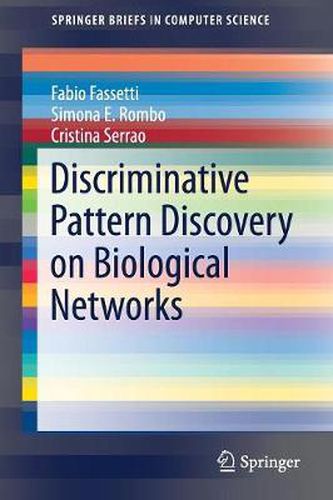Readings Newsletter
Become a Readings Member to make your shopping experience even easier.
Sign in or sign up for free!
You’re not far away from qualifying for FREE standard shipping within Australia
You’ve qualified for FREE standard shipping within Australia
The cart is loading…






This title is printed to order. This book may have been self-published. If so, we cannot guarantee the quality of the content. In the main most books will have gone through the editing process however some may not. We therefore suggest that you be aware of this before ordering this book. If in doubt check either the author or publisher’s details as we are unable to accept any returns unless they are faulty. Please contact us if you have any questions.
This work provides a review of biological networks as a model for analysis, presenting and discussing a number of illuminating analyses. Biological networks are an effective model for providing insights about biological mechanisms. Networks with different characteristics are employed for representing different scenarios. This powerful model allows analysts to perform many kinds of analyses which can be mined to provide interesting information about underlying biological behaviors.
The text also covers techniques for discovering exceptional patterns, such as a pattern accounting for local similarities and also collaborative effects involving interactions between multiple actors (for example genes). Among these exceptional patterns, of particular interest are discriminative patterns, namely those which are able to discriminate between two input populations (for example healthy/unhealthy samples).
In addition, the work includes a discussion on the most recent proposal on discovering discriminative patterns, in which there is a labeled network for each sample, resulting in a database of networks representing a sample set. This enables the analyst to achieve a much finer analysis than with traditional techniques, which are only able to consider an aggregated network of each population.
$9.00 standard shipping within Australia
FREE standard shipping within Australia for orders over $100.00
Express & International shipping calculated at checkout
This title is printed to order. This book may have been self-published. If so, we cannot guarantee the quality of the content. In the main most books will have gone through the editing process however some may not. We therefore suggest that you be aware of this before ordering this book. If in doubt check either the author or publisher’s details as we are unable to accept any returns unless they are faulty. Please contact us if you have any questions.
This work provides a review of biological networks as a model for analysis, presenting and discussing a number of illuminating analyses. Biological networks are an effective model for providing insights about biological mechanisms. Networks with different characteristics are employed for representing different scenarios. This powerful model allows analysts to perform many kinds of analyses which can be mined to provide interesting information about underlying biological behaviors.
The text also covers techniques for discovering exceptional patterns, such as a pattern accounting for local similarities and also collaborative effects involving interactions between multiple actors (for example genes). Among these exceptional patterns, of particular interest are discriminative patterns, namely those which are able to discriminate between two input populations (for example healthy/unhealthy samples).
In addition, the work includes a discussion on the most recent proposal on discovering discriminative patterns, in which there is a labeled network for each sample, resulting in a database of networks representing a sample set. This enables the analyst to achieve a much finer analysis than with traditional techniques, which are only able to consider an aggregated network of each population.